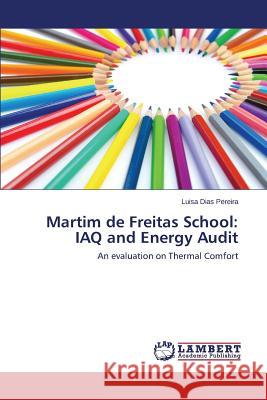Martim de Freitas School: IAQ and Energy Audit » książka
Martim de Freitas School: IAQ and Energy Audit
ISBN-13: 9783659192494 / Angielski / Miękka / 2014 / 140 str.
Included in the area of energy for sustainability, this work intends to advance beyond the analysis of buildings' energy consumption, towards air quality experienced by its occupants. Departing from a practical case, Martim de Freitas School in Coimbra, the procedure is to measure parameters of indoor air quality in the sense of its proper evaluation. Contributing to the characterization of IAQ, a survey directed to the occupants is developed, in addition to measurements carried out within a classroom, during the heating season and the "pre-cooling" season. Subsequently it is held a simulation on PPD and PMV thermal comfort indices. Over this data, it is promoted an appreciation of the current minimum parameters suggested by the current national (Portuguese) and European legislation, its implications and probable exaggerations, condition and conditioning of the school's recently intervened buildings. As an outcome, a model for action is proposed - an Action Plan, similar to what is common practice in the USA, targeting the School management team. Finally, the conclusions of the work are presented, suggesting and opening the possibility of further research.
Included in the area of energy for sustainability, this work intends to advance beyond the analysis of buildings energy consumption, towards air quality experienced by its occupants. Departing from a practical case, Martim de Freitas School in Coimbra, the procedure is to measure parameters of indoor air quality in the sense of its proper evaluation. Contributing to the characterization of IAQ, a survey directed to the occupants is developed, in addition to measurements carried out within a classroom, during the heating season and the "pre-cooling" season. Subsequently it is held a simulation on PPD and PMV thermal comfort indices. Over this data, it is promoted an appreciation of the current minimum parameters suggested by the current national (Portuguese) and European legislation, its implications and probable exaggerations, condition and conditioning of the schools recently intervened buildings. As an outcome, a model for action is proposed - an Action Plan, similar to what is common practice in the USA, targeting the School management team. Finally, the conclusions of the work are presented, suggesting and opening the possibility of further research.











